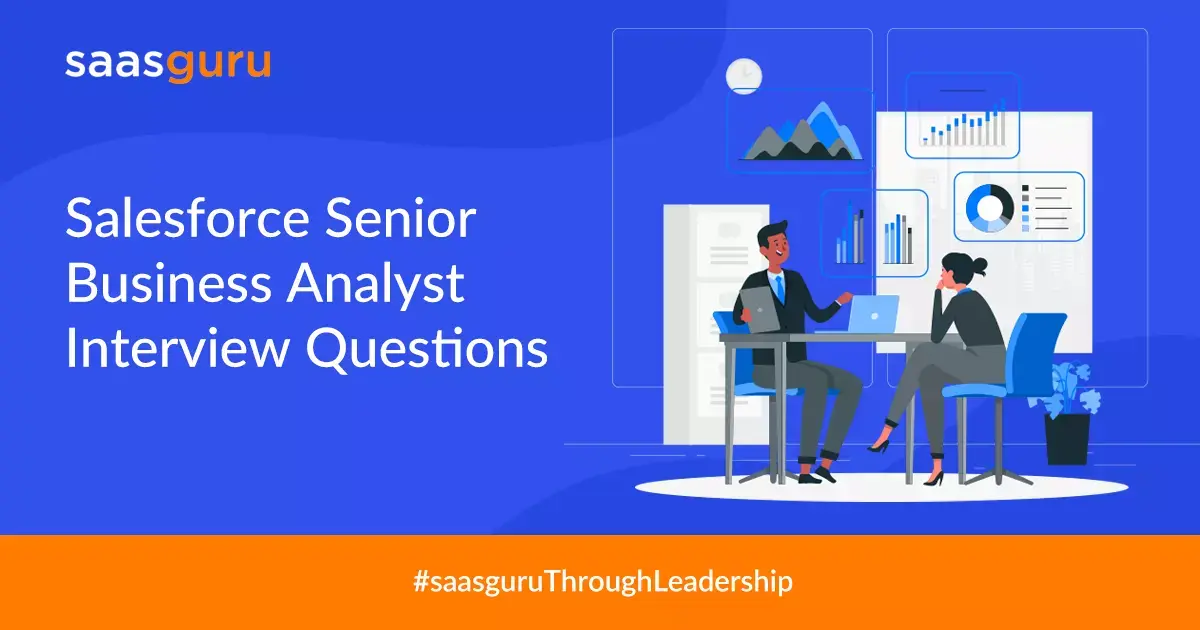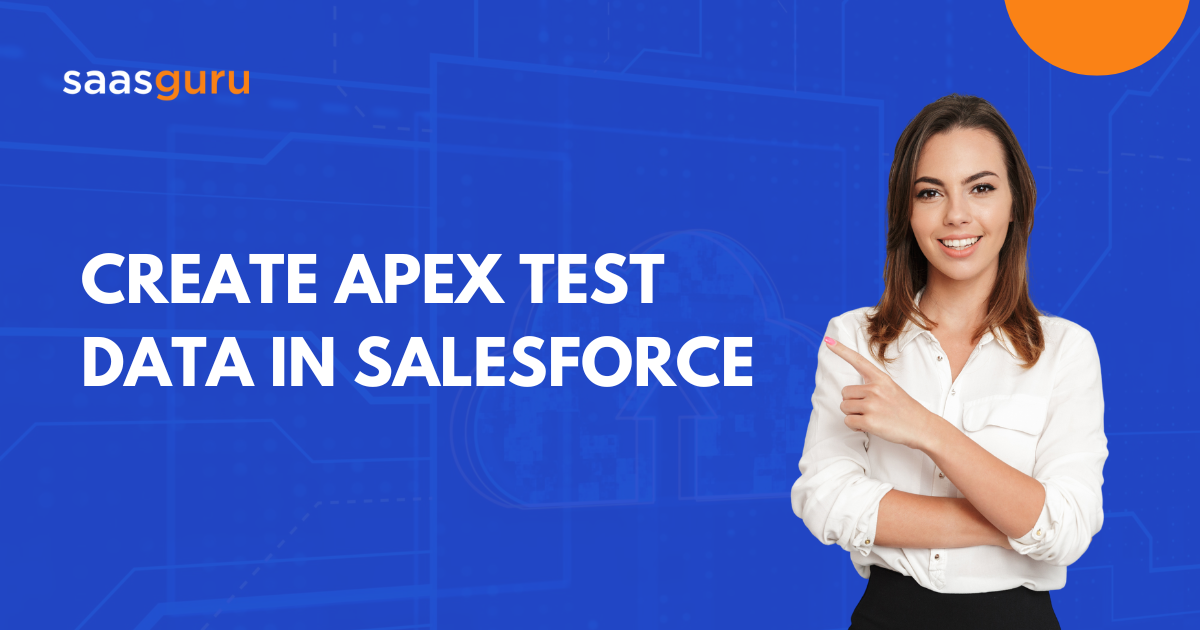As a Salesforce Senior Business Analyst, you play a critical role in analyzing business needs, designing solutions, and guiding the implementation of Salesforce projects. With the ever-increasing demand for Salesforce professionals, the interview process can be rigorous, especially for senior positions. It is crucial to be fully prepared for a job interview by familiarizing yourself with the potential questions that may be asked.
To assist in your preparation, we have gathered a selection of interview questions that a Senior Business Analyst for Salesforce might pose during the interview process. These questions cover a wide range of topics, from your technical skills and experience to your soft skills and problem-solving abilities.
Familiarizing yourself with these questions will equip you to anticipate the interviewer’s questions and provide thoughtful answers that showcase your experience and expertise. So, let’s dive into these interview questions and get ready to ace your Salesforce Senior Business Analyst interview!
Before delving into the questions and answers for your upcoming Salesforce Business Analyst interview, it is important to clarify any uncertainties regarding your role as a Salesforce Business Analyst and establish effective strategies for interview preparation.
What does a Business Analyst do at Salesforce?
As a Business Analyst at Salesforce, your role is integral to successfully implementing Salesforce projects. Your responsibilities as a Salesforce Business Analyst include analyzing business requirements, designing business process solutions, and guiding the implementation of Salesforce projects. The ultimate goal is to ensure that the Salesforce implementation delivers the desired business outcomes, meets the organization’s needs, and provides a positive user experience.
To achieve this goal, you will need to work closely with business stakeholders, project managers, developers, architects and testers. As a part of your key duties, you will be required to collect and analyze business needs and then convert them into technical requirements that can be utilized by developers for constructing Salesforce solutions. You will need to be able to analyze complex business processes, identify inefficiencies, and propose solutions that optimize these processes.
As a Business Analyst, you will also need to have a deep understanding of Salesforce functionality and be able to design solutions that take full advantage of the platform’s capabilities. Collaboration with developers is essential to guarantee that the solutions you create are practical and meet technical standards. Therefore, you will be required to work closely with them throughout the design and implementation process.
Additionally, you will be responsible for ensuring that the Salesforce solutions are thoroughly tested and meet the business requirements before they are rolled out to end users.
One of the most critical aspects of your role is to ensure that the Salesforce implementation remains relevant and useful over time. You will need to continuously monitor and analyze user feedback, identify areas for improvement, and suggest changes that enhance the functionality and user experience of the Salesforce solution.
How to Prepare for a Salesforce Business Analyst Interview?
Following are some tips on how to prepare for your Salesforce Business Analyst interview:-
- Before your interview, conducting a comprehensive investigation of the company and the job position is crucial. Acquiring knowledge of the organization’s mission, values, and Salesforce-related projects is important. Reviewing the job description can provide valuable insight into the required skills and experience for the position. Through this approach, you can customize your interview answers to reflect your comprehension of the company’s requirements and highlight your pertinent skills and knowledge.
- Review Salesforce Functionality: Salesforce is a complex platform with many features and functionalities. Familiarize yourself with a few clouds of Salesforce, like Marketing Cloud, Sales Cloud, Community Cloud, and Service Cloud along with their respective capabilities. It’s essential to have a deep understanding of Salesforce functionality to communicate your ideas during the interview effectively.
- Assess your Skills: The role of a Salesforce Business Analyst entails a diverse set of skills, encompassing technical proficiency, analytical capabilities, and effective communication skills. Evaluate your skills and experience against the job description, and analyze gaps for improvement. Adapting your answers to align with the interviewer’s inquiries can showcase your relevant knowledge and proficiency in the field.
- Practice Common Interview Questions: Practice common Salesforce Business Analyst interview questions, such as “What is your experience with Salesforce?”, “How do you approach requirements gathering?” and “How do you manage conflicting priorities?”. Practice your responses with a friend or colleague to improve your answers.
- Prepare a Portfolio: Create a portfolio of your past Salesforce projects, including the requirements you gathered, the solutions you designed, and the outcomes achieved. This can serve as a visual aid during the interview and demonstrate your ability to deliver results. It is recommended to prepare for the discussion of specific use cases in which you have played a key role in the success of previous projects.
- Attend Salesforce Training and Certification Courses: Attend Salesforce Business Analyst training and take certification exams to demonstrate your knowledge and commitment to the platform. This will give you an edge during the interview. If you want to be a successful Salesforce Business Analyst, earn a certification to validate your understanding of the Salesforce platform and check the prerequisites. Check out our self-learn Salesforce Business Analyst Course as well.
InterviewGPT by saasguru
saasguru’s InterviewGPT is an interview preparation tool that utilizes artificial intelligence to aid your practice for Salesforce interviews. This platform provides a wide range of Salesforce interview questions and scenarios that are frequently asked.
Its AI-powered feedback and analytical capabilities provide instantaneous performance insights, helping you identify areas for improvement and develop the confidence necessary to excel in your interview.
Related Read: Salesforce Business Analyst Interview Questions for the Sales Department
Sample Interview Questions and Answers for the Salesforce Senior Business Analyst Interview
If you’re preparing for a Salesforce Senior Business Analyst interview, it’s essential to understand the types of questions you will be asked. The role of a Senior Business Analyst at Salesforce is critical in ensuring the success of Salesforce projects, and the interviewer will want to ensure that you possess the skills, knowledge, and experience required for the role.
1.What experience do you have with Salesforce?
This question assesses your knowledge and experience with Salesforce. Don’t forget to mention particular advantages and features of Community Cloud, Service Cloud, Marketing Cloud, and Sales Cloud and your experience of working with it. You can also discuss your experience with Salesforce implementation projects, including requirements gathering, solution design, and user training.
2. How do you ensure that your recommendations align with the overall goals and objectives of the organization?
Sample Answer: To ensure that your recommendations align with the overall goals and objectives of the organization, you can mention that you collaborate closely with the key stakeholders to understand their needs and priorities. Additionally, you must also explain that your recommendations are backed by data and that they are feasible and practical to implement.
3. Can you tell us about a time when you had to work with a difficult stakeholder, and how did you handle the situation?
Sample Answer: Mention your responsibilities in your previous role, and your work with a stakeholder who was very resistant to change and was not receptive to new ideas. To handle the situation, you should elaborate the steps you took like understanding their concerns and perspectives, and tailoring your communication approach to their needs. You should also give an example of how you provided them with evidence and data to support your recommendations and was patient and persistent in my efforts.
4. How do you prioritize competing demands when managing multiple projects simultaneously?
Sample Answer: To effectively manage multiple projects simultaneously, one must prioritize tasks by assessing their level of urgency and impact on organizational objectives. Maintaining open communication channels with the project team and stakeholders is essential to ensure that all parties are aware of project priorities and that resources are allocated appropriately. This approach helps ensure that projects are completed efficiently and effectively, without sacrificing quality or risking delays.
5. Can you give an example of a time when you had to make a difficult decision that had a significant impact on a project’s outcome?
Sample Answer: You can elaborate any example of your previous role where you had to make a difficult decision regarding a project’s scope that had a significant impact on the project’s outcome.
6. How do you stay up-to-date with industry trends and developments?
Sample Answer: Remaining current with industry trends and advancements is essential for staying relevant in any profession, including Salesforce. Professionals in this field should attend industry events, such as conferences and seminars, and engage in continuing education programs to stay up-to-date on the latest trends and developments. Reading industry publications and blogs can also provide valuable insights into current and emerging trends. Networking with other professionals in the field is crucial to exchange knowledge and ideas.
7. How do you approach requirements gathering?
Sample Answer: As a Senior Business Analyst, Requirements gathering is a critical part of your role. The interviewer will want to ensure that you have a structured approach to gathering and documenting requirements. Explain the approach you take to recognize stakeholders, specify their demands, and authenticate those requirements by collaborating with stakeholders.
8. How do you manage conflicting priorities?
Sample Answer: Managing conflicting priorities is a common challenge for Senior Business Analysts. The interviewer may ask how you prioritize requirements, negotiate with stakeholders, and manage expectations. Be prepared to discuss your approach to managing conflicts and your experience with resolving conflicts in past projects.
9. How do you collaborate with cross-functional teams?
Sample Answer: To excel in your position as a Senior Business Analyst, it will be essential to work closely with diverse cross-functional teams, such as stakeholders, project managers, and developers. The interviewer may ask how you communicate with these teams, how you build trust and credibility, and how you manage conflicts. Make sure to be ready to talk about your familiarity with various collaboration tools and techniques like Agile methodologies and Scrum.
10. What experience do you have with data analytics and reporting?
Sample Answer: Data analytics and reporting are critical skills for Senior Business Analysts. The interviewer may ask about your experience with data analysis, report design, and dashboard development. Be ready to talk about your proficiency in utilizing data visualization tools, such as Power BI or Tableau, as well as your expertise in data modeling and data cleansing.
11. What are some common documents required by a business analyst?
Sample Answer: The types of documents required generally depend on the project’s use process. As a business analyst, you will likely encounter a variety of documents that are essential for the success of your projects. These documents may include an initial project scope document, gap analysis report, system requirements specifications, change request forms, business requirement documents, functional requirement documents, use case specifications, and requirements traceability matrices. Properly creating and maintaining these documents is crucial to ensure that project requirements are met, stakeholders are informed, and team members are aligned.
12. What are the steps to follow when creating a use case?
Sample Answer: It’s crucial to highlight that use cases should be properly documented, clear, and succinct. The process involves identifying users, establishing a persona for each user role, identifying objectives associated with each role, and creating the use case by capturing functional and non-functional requirements, user interface specifications, and use case diagrams. The last step is to review and validate the use case.
13. What are the key differences between Agile and Waterfall methodologies?
Sample Answer: When considering project management methodologies, the waterfall approach is typically more suitable when the project has a fixed budget or time frame, predictable outcomes, and clearly defined requirements. On the other hand, the Agile methodology is a better fit when the requirements are expected to change and evolve, and the project can be delivered incrementally. Additionally, the Agile approach involves close collaboration and involvement from business stakeholders throughout the project, whereas the waterfall approach is typically more sequential and less flexible.
14. What are some common strategies for identifying areas in a business process to improve?
Sample Answer: In addition to asking stakeholders for their opinions, it is also essential to mention business process mapping and tools like Value Stream Maps. A quote from Ash Finnegan, Digital Transformation Officer at Conga that can impress interviewers is, “If you take a bad process and add technology, you just get a faster bad process.”
15. How do MoSCoW and SWOT differ?
Sample Answer: MoSCoW is a prioritization technique that uses the categories Must, Should, Could, and Would to assess requirements. It involves comparing demands with other requirements to determine the needs of the framework.
In contrast, SWOT stands for Strengths, Weaknesses, Opportunities, and Threats Analysis. This is a widely-used method for allocating resources effectively. A proficient business analyst should be able to identify the strengths and weaknesses of a framework and translate them into opportunities and threats. Unlike MoSCoW, which focuses on prioritization, SWOT emphasizes analysis to better understand a framework and its potential risks and opportunities.
16. What is the meaning of business modeling?
Sample Answer: Business modeling is a comprehensive, systematic approach that aids in identifying the value proposition for running a business. This approach comprises several essential components such as a vision, mission, action plan, strategies, and objectives. These components work together to create a detailed roadmap for the business to achieve its goals and objectives. The business modeling process is an iterative one, as it involves testing and refining various assumptions until a clear, concise, and effective plan is established.
17. What are your strongest skills as a Salesforce Business Analyst?
Sample Answer: As a Senior Salesforce Business Analyst, your strongest skills must include – data analysis, project management, and stakeholder communication. You should also be proficient in using tools like Tableau and Excel to analyze data and identify insights to improve sales performance.
18. Can you walk us through your process for requirement elicitation?
Sample Answer: Explain the process that you follow for requirement elicitation and how it starts with conducting thorough research and analyzing data. An effective way to demonstrate your expertise is by highlighting how you work collaboratively with stakeholders to gather valuable insights and identify their unique requirements.
19. How do you handle a situation where stakeholders have conflicting priorities?
Sample Answer: Here you must mention that when stakeholders have conflicting priorities, you work closely with them to understand their needs and identify common ground. And you also develop a plan that addresses all their concerns and ensures that we can achieve our objectives without compromising the quality of the project.
20. What experience do you have with Salesforce Lightning?
Sample Answer: Mention your extensive experience working with Salesforce Lightning, and that you are proficient in its features and functionality. You can also explain that you have implemented several Salesforce Lightning projects, improving user experience and increasing productivity.What is your approach to user adoption and training for Salesforce implementations?
Answer: A comprehensive training plan that includes hands-on training of the business processes implemented in Salesforce, user manuals, and ongoing support is essential for user adoption and training in Salesforce implementations.
21. How do you handle a situation where a Salesforce project is not meeting the expected results?
Sample Answer: When a Salesforce project is not meeting the expected results, a thorough analysis should be conducted to identify the root cause of the problem. A plan should be developed with stakeholders to address the issues and ensure that the objectives are achieved.
22. What experience do you have with Salesforce CPQ?
Sample Answer: Experience in configuring pricing and quoting solutions for organizations with Salesforce CPQ is essential. So don’t forget to elaborate your experience. Proficiency in its features and functionality is also necessary to customize it to meet specific business needs.
23. How do you manage project timelines and ensure that projects are delivered on time?
Sample Answer: Developing a comprehensive project plan with clear milestones and deadlines is crucial to managing project timelines. Frequent and effective communication with stakeholders is vital to ensure that the project is progressing as planned and any concerns or roadblocks are addressed in a timely manner.
24. What experience do you have with data migration and integration?
Sample Answer: Experience in integrating Salesforce with other systems and proficiency in tools like Informatica and MuleSoft is essential for data migration and integration.
25. What is your experience with Salesforce Communities?
Sample Answer: Experience in implementing self-service portals and improving customer engagement with Salesforce Communities is essential. Proficiency in its features and functionality is necessary to customize it to meet specific business needs.
26. What is a RACI chart?
Sample Answer: A RACI chart is a popular tool used in project management to clearly define and communicate roles and responsibilities for a project or task. The acronym RACI stands for Responsible, Accountable, Consulted, and Informed.
This chart serves as a visual aid to identify and clarify the roles and responsibilities of team members in completing a specific task or achieving a project’s objectives. It helps to ensure that everyone understands their role in the project, who has decision-making power, who needs to be consulted before making decisions, and who needs to be kept informed about the project’s progress.
Each task or activity is listed in the left-hand column of the chart, while the top row lists all the stakeholders involved in the project. The chart then uses a combination of letters (R, A, C, and I) to indicate the role each stakeholder plays for each task or activity. These types of metrics are generally owned by Program or Project managers.
27. What is the Requirement Traceability Matrix?
Sample Answer: The Requirement Traceability Matrix (RTM) is a tool used in project management to track and manage requirements throughout the project lifecycle. It is a table that links all the project requirements to their corresponding source, and it allows stakeholders to trace requirements from their origin to their implementation and validation.
The RTM provides a systematic approach to managing requirements by helping stakeholders understand how each requirement is related to the others and how they impact the overall project goals. The matrix is typically structured in a tabular format with rows listing individual requirements and columns identifying their source, such as the project scope, functional specifications, or design documents.
28. What is Pareto Analysis?
Sample Answer: Pareto Analysis is a decision-making tool used in quality management to identify and prioritize the root causes of problems. It is based on the Pareto Principle, which states that 80% of problems are caused by 20% of the possible causes.
The analysis involves gathering data on the frequency and impact of each potential cause and plotting it on a chart, known as a Pareto chart. The chart ranks the causes in descending order of frequency or impact, highlighting the most significant contributors to the problem.
Pareto Analysis helps to focus resources on the most critical issues, allowing organizations to prioritize their efforts and allocate resources accordingly.
29. How do you ensure that the requirements gathered from stakeholders are accurate and complete?
Sample Answer: To ensure that the requirements gathered from stakeholders are accurate and complete, the business analyst uses a variety of techniques such as interviews, surveys, and observation. During interviews, open-ended questions are asked and active listening is used to gain a deeper understanding of the stakeholders’ needs. Surveys are used to gather more quantitative data on specific topics. Observation is also important, as it allows the business analyst to see firsthand how stakeholders are currently using the system or processes and identify any pain points or areas for improvement. Additionally, all requirements are documented and reviewed by stakeholders to verify their accuracy and completeness.
Summing Up
Preparing for a Salesforce Senior Business Analyst interview requires a strong understanding and ability to identify areas for business process improvement and create effective use cases. It’s also important to have knowledge of the various documents required by a business analyst throughout the project lifecycle.
By preparing thoughtful and well-informed answers to these common interview questions, you can demonstrate your expertise and suitability for the role of a Salesforce Senior Business Analyst. Remember to showcase your knowledge, experience, and skills in a confident and professional manner to impress your interviewer and secure the position. Good Luck!











